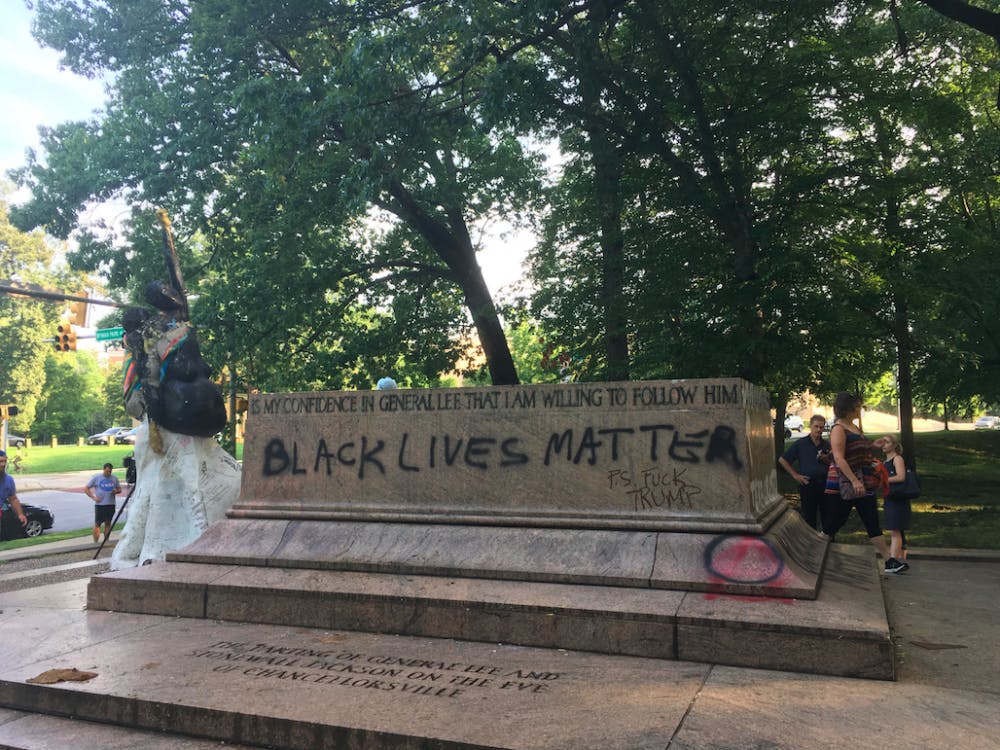The Baltimore City Council approved legislation on Feb. 5 to rededicate the site of a former Confederate monument to Harriet Tubman.
A portion of Wyman Park Dell, a park near Homewood Campus, will be named after Tubman, who was a Maryland-born slave and conductor of the Underground Railroad. In August 2017, the City removed four Confederate monuments, including a statue of Robert E. Lee and Thomas J. “Stonewall” Jackson in Wyman Park Dell.
In an email to The News-Letter, City Councilwoman Mary Pat Clarke, who represents the 14th district, which includes Charles Village and the surrounding area, said that the site will be rededicated as the “Harriet Tubman Grove” on March 10. Clarke introduced the rededication legislation in October 2017.
“Just as Harriet Tubman led hundreds from slavery and hundreds of Union soldiers during the Civil War, she is now helping lead Baltimore’s reclamation of our four former confederate sites, as a place of community gathering and peaceful contemplation,” she wrote.
The original Lee-Jackson Monument was erected in 1948. It was originally built to portray the men as “Christian soldiers.”
Nathan Connolly, the Herbert Baxter Adams associate professor of history at Hopkins, explained the symbolism of the original statues.
“Statues in general, particularly around the time of slavery and Jim Crow, have so much to carry as narratives, as icons, as pieces of the furniture of our democracy,” Connolly said.
According to Connolly, the statues may have reflected the response of white Baltimoreans to the gradual movement of increasing the rights of African Americans around 1948.
“It was really important for people in the city of Baltimore to reassert the history of the confederacy after 1947-48 — the reason being that there was already a sense that the federal government was going to be much more responsive to African American needs,” Connolly said.
Connolly explained that most of the former Confederate statues were located in historically white parts of Baltimore because of a long history of memorializing the Confederacy.
Ryan Patterson, the president of the Friends of Wyman Park Dell board, explained how the idea for the rededication came about.
“There were a lot of people who thought it’d be great, and they brought this petition to Mary Pat Clark, our council person, asking for that,” he said. “Mary Pat asked the Friends and we were very supportive, with some parameters around it. It was a conversation.”
As the president of the board, Patterson is committed to preserving and maintaining the park. He also serves to gather feedback on issues of importance, like the future of the Confederate monuments.
When asked about the role of the board in the rededication of the park, Patterson said that they mainly served to facilitate conversations.
“The friends group didn’t take a stance during that debate,” he said. “It was more of a stance of ‘we’re here to really listen to our constituents.’”
When asked about his personal opinions on the removal of the monument, he said that it was definitely the correct decision for the community but wanted others to recognize that the Lee-Jackson monument was made by a female artist.
“It’s a loss only in that it was the only sculpture of its kind that we have from a female artist, and I wish that story were told more,” Patterson said.
Freshman Nick Sloan commended the city’s decision.
“I thought it was a pretty progressive and appropriate step given that we have a very diverse community,” Sloan said.
He sees public monuments as representative of the ideas that a society believes in and thinks that the City should destroy them.
“A monument shows that we’re proud of the history that it represents. I don’t think that we’re proud of slavery. So we shouldn’t commemorate the people that fought for it,” Sloan said.
In an email to The News-Letter, freshman Zachary Wheeler echoed many of Sloan’s sentiments. He thinks that the City Council responded appropriately to widespread public opposition to the monuments.
“I believe that the election of Donald Trump gave many cities in America the shock that was needed in order for people to remember that these statues were controversial,” Wheeler wrote.
Instead of destroying the statues, Wheeler believes that they should be moved.
“It is important to understand the past and learn from it,” Wheeler wrote. “Placing these statues in museums would keep their historical value.”





